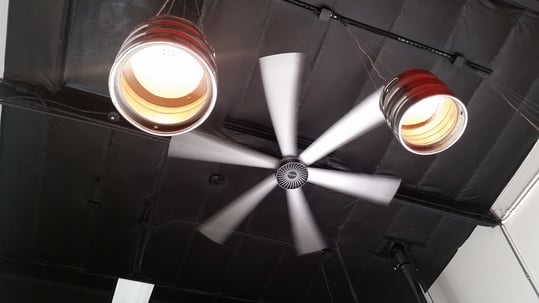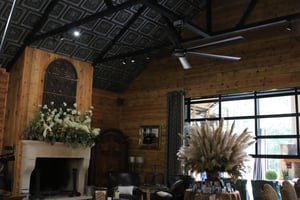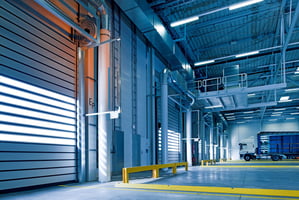Did you know that HVLS fans offer year round benefits? That’s right! They not only help cool your...
Do Ceiling Fans Help with Heating Costs?
The rules of nature tell us that warm air rises up towards the ceiling. We know this, but have you thought about how that impacts your heating costs? As you spend money to make sure you stay warm, much of that warm air pumped into your space is actually lost through the roof. Ultimately, this drives up heating costs. So, how can you fix it? Well, let’s talk about ceiling fans for heat…
We all know ceiling fans are a great resource to help keep a cool environment, but the same holds true in the winter months for creating a warmer environment. Not only do ceiling fans help with cooling but they also help distribute warm air to minimize heat loss, keeping your space warmer. But at what expense? Do ceiling fans help with heating costs or hinder them?
You may be surprised to learn that adding ceiling fans significantly helps with heating costs.
What You Need to Know About Ceiling Fans During the Winter
There are many reasons using a ceiling fan in the winter can benefit your business:
- Make a room feel warm and more comfortable
- Increase productivity
- Save on heating costs
- Reduce the cost of supplemental central heating
- Reduce fire hazards and clutter due to space heaters
- Improve indoor oxygen content and air quality
- Provide uniform humidity control
- Reduce floor sweat
Ceiling Fans Can Lower Your Electricity Bill During the Winter
On average, winter heating costs about 15-50% more than summer cooling because heating uses about three times more energy. However, you may be able to save about 15% or more on your monthly electric bills just by running a ceiling fan during the winter months, saving you serious money on your heating bills.
Make Sure Your Ceiling Fan is Rotating in the Right Direction For Heat
When using your ceiling fans in the winter, it is ideal to set your thermostat temperature on your heating system a few degrees cooler and turn your ceiling fan on and circulate the air in a counterclockwise direction. Be aware of your ceiling fan direction, as the wrong fan direction will have the opposite effect.
You will need to switch your fan to reverse or clockwise to help push the warm air towards the floor level and pull the cool air up. Once the air rises, it will span towards the walls and outer edges of the room and then is pushed back towards the floor. Because the air close to the ceiling is warmer, the air that is pushed towards the floor mixes and causes the room overall to feel warmer and keeps the air at a steadier temperature. If your ceilings are high, vaulted or cathedral type, running the fan in the counterclockwise rotation would be ideal for heat distribution. The heat in the room will distribute evenly, causing your furnace to work less and improve the overall comfort level. When the furnace is running less frequently, it consumes less energy, thus, saving you money in heating costs. Then you get to keep that money you save to spend in other great ways!
Use the Correct Speed Setting During Colder Months
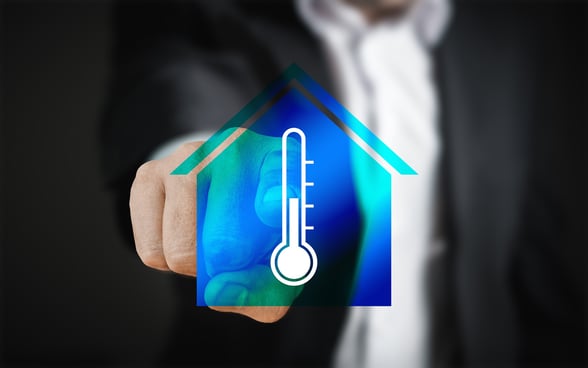
We recommend running your fan in reverse at a higher speed for the first few minutes (just to mix the air quickly) then lowering the speed to 25% or less. We also recommend you keep your fan running at that lower speed all day.
The speed of your ceiling fan does not dictate the effectiveness of moving the warm air towards the floor level and pulling the cool air up for recirculation. The speed does, however, dictate the amount of air you are moving and the comfort level of your people. The higher the speed, the more you feel the air movement, which in the winter can become uncomfortable if the fan is at full speed. It really comes down to volume of air. So, if you would like to move more air, turn your fan up to a higher level. Likewise, if you would like to move less air, turn your fan down to a lower level.
Is it Okay to Leave a Ceiling Fan on All the Time
Ceiling fans are designed to run continuously. It is completely safe to do so. However, it is up to you whether you would like it on when there is no one else in the room. Some chose to turn their fans off during those downtimes, while others chose to keep them running. HVLS ceiling fans cost pennies a day to run, so it really is not a hit on your wallet to keep them running.
Consider Building Layout
If you are in a large facility, think of your warehouse or building layout. How big of a ceiling fan do you need for your space? Do you have obstructions such as tall pallet racks, machinery, or loading areas with obstructions from the floor to the ceiling? Do you have a building management system?
Versatility Matters with MacroAir
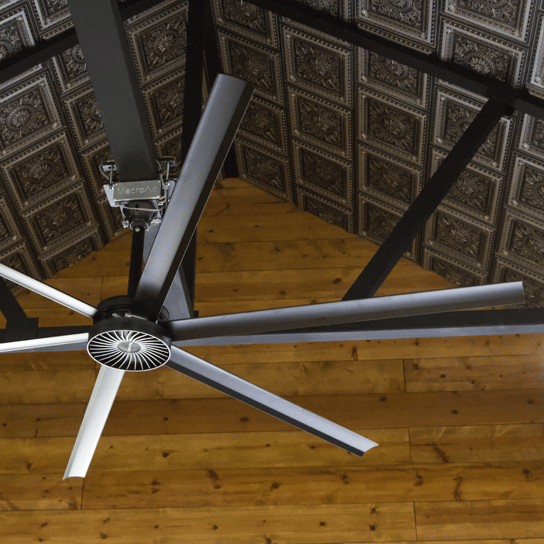
MacroAir offers HVLS fans ranging in size from 6-24 feet in diameter. That means they can accommodate almost ANY type of space! If you have a tight or small space or a massive warehouse space, we have a fan that can effectively move air for you.
All MacroAir fans run in reverse to utilize the benefits of your current heating system. No matter what your space is like, our experts can help you figure out the size of fan that you need, and the best location to install it.
Ready, Set, Let’s Go!
Do you currently have a fan, but have not implemented the reverse function? Give it a try this winter! Ceiling fans are meant to run all year long. We would like to encourage you to try a few of the above tips to get your fan running in reserve at the right time in the right way.
Have you had a revelation about ceiling fans today? Do you see the benefits of running fans in the winter months? Contact us! We can help you get started. Our experts will help you find the right fan to get that heat circulating. We want you and your people comfortable ALL year long! Winter months included.
